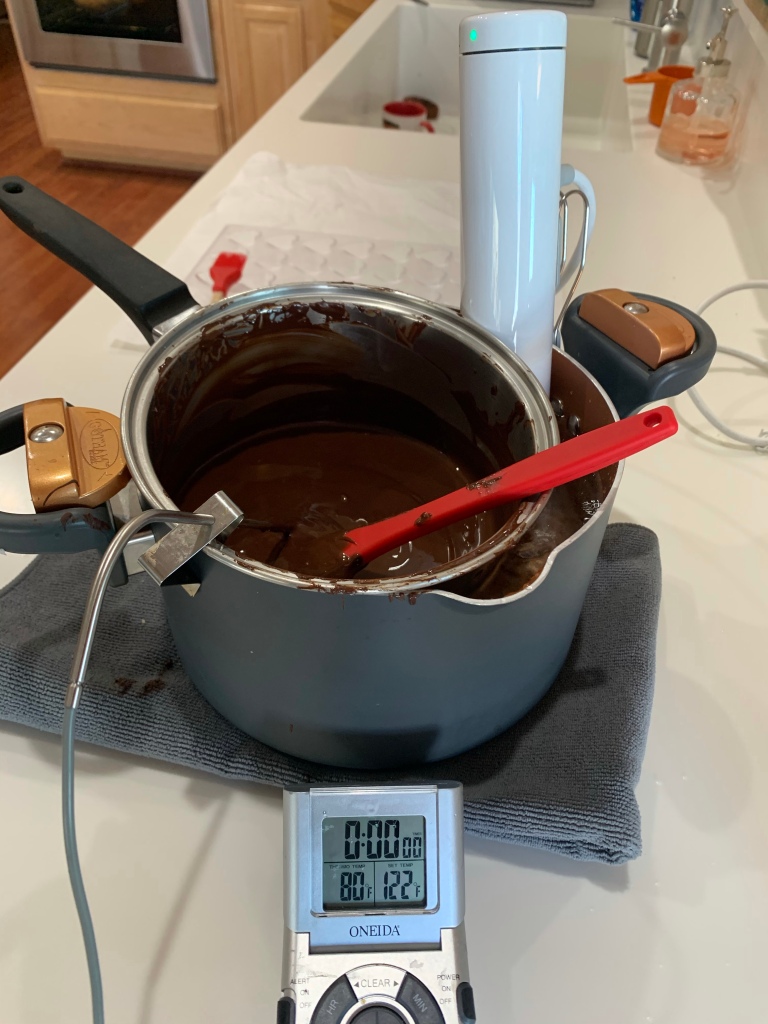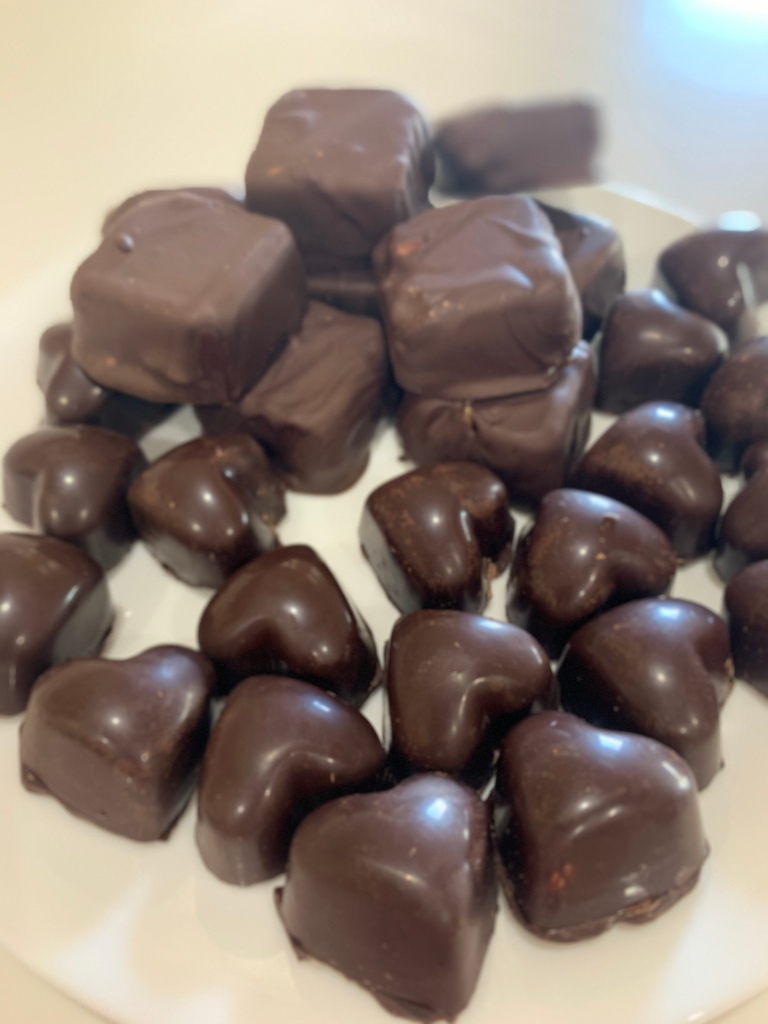I saw these on GBBO and decided to give them a go. (Kind of English slang for “try to make them”.) Millionaires Bars are layers of shortbread, caramel and chocolate.
I used a jelly roll pan, which is about 25% bigger than the specified pan. This caused each layer to be thinner than I expected. As they were setting I considered increasing the recipe quantities by about 50%. After cutting and eating them I think I am going to leave them the way they are. They ended up being about 1/4” thick and if I cut them into 1” square pieces they will be perfect bite sized pieces.

Self induced problems: 1) Forgot to use the parchment paper making me worry about releasing the bar from the jelly roll pan. No problem. I cut around the outside and across the center. Each large piece came out easily. 2) I should have poured the chocolate on the caramel before it set. Not doing so caused the chocolate to not adhere to the caramel. Cutting the bars into 1” squares, so you can just pop them into your mouth without taking a bite and “breaking” them, converts the problem into an enhancement.
Overall, these are delicious cookies. The caramel was heated to 242 deg which made it a perfect softness and texture. The chocolate wasn’t tempered but resulted in a nice layer with a good snap. The short bread base was difficult to push to the edges of the pan, but perhaps rolling it out before placing in the pan would help. I also skipped the macadamia nuts as my pantry was bare. If you saw my pantry, you wouldn’t believe that possible.
Millionaire Shortbread Bars
Millionaire Shortbread Bars
Paul Hollywood’s Salted Caramel Bars
https://people.com/food/paul-hollywood-salted-caramel-bars-recipe/
INGREDIENTS
• ⅓ cup granulated sugar
• 1⅓ cups unsalted butter, softened and divided, plus more for greasing
• 1¾ cups all-purpose flour
• ½ tsp. table salt
• ¾ cup packed light brown sugar
• ⅓ cup sweetened condensed milk
• 3 tbsp. golden cane syrup (or honey as a substitute)
• 1 tsp. flaky sea salt
• 7 oz. dark chocolate baking bar, chopped
• ½ cup coarsely chopped macadamia nuts
METHOD
- Preheat oven to 300°. Grease a shallow 11×7-inch baking dish with butter.
- Line baking dish with parchment paper, allowing paper to extend by 2 inches on each side; grease parchment.
- Beat granulated sugar and 2/3 cup butter in a large bowl with an electric mixer on medium speed until light and fluffy, 2 to 3 minutes. Add flour and table salt; stir with a spoon, and then combine with your hands to form a smooth dough (try not to overwork it). I ended up adding a couple of Tbl water to the dough so it would come together,
- Press dough into pan in an even layer, and prick surface all over with a fork. Bake in preheated oven until pale golden and cooked through, 30 to 35 minutes. Cool completely in pan, about 45 minutes.
- Combine brown sugar, condensed milk, golden syrup (or honey) and remaining 2/3 cup butter in a medium-size heavy saucepan over medium heat. Cook, stirring often, until butter melts and mixture is smooth, about 3 minutes. Bring to a boil, and cook, stirring constantly, until the caramel bubbles become larger, mixture thickens and turns a rich, glossy caramel color, about 10 to 12 minutes. Pour caramel evenly over the shortbread, and sprinkle with sea salt. Cool completely until set, about 1 hour.
- Melt chocolate, stirring often, in a heatproof bowl suspended over a pan of simmering water, making sure the bottom of the bowl doesn’t touch the water. Pour melted chocolate evenly over caramel layer; spread with an offset spatula until level and smooth. Sprinkle with nuts. Let stand until chocolate is set, about 1 hour. Use a knife to release ends of bars from pan; use the parchment paper as handle to remove from pan. Cut into bars.





